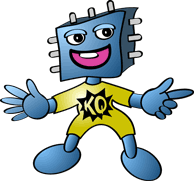MEET THE CHALLENGE
You Can Do It Too

Whatever your challenge, if you ever wonder, “Can I be an athlete?”, the answer is “YES!”
Nearly 5 million U.S. kids have activity limitations. That means it’s tough for them to do things that other kids take for granted, like play, go to school, and participate in physical activity. Other challenges, such as learning disabilities, may prevent people from getting involved too.
Fortunately, it’s becoming much easier for people with all kinds of disabilities to take part in physical activities. Lots of groups across the U.S. help out by providing information and chances to compete. And special equipment uses the latest materials (such as light plastics) and improved design to let people with disabilities hold their own in almost any activity. For example, today’s wheelchairs for racing, tennis, and basketball are lighter and easier to control than ever. Some wheelchairs weigh only 15 pounds. That’s about as much as a book bag with two or three textbooks in it!
Just check out what some athletes with disabilities have done…
Down hill skiers with one leg have been clocked at over 74 miles per hour. (Olympic skiers usually go 80-85 miles per hour.) Joseph Bishop, won at the Special Olympics when he tried the softball throw, long jump, and 100 meter dash. Rudy Garcia-Tolson uses his gear and his unbeatable attitude to get in the game(s). He runs, swims, bikes, and skateboards! Like him, water skier Mark “the Animal” Turner and judo stars Lisa Newton and Lynn Manning have excelled at their sports. They live as athletes first and people with disabilities second.
But, what’s in it for you?
Physical activity has the same benefits for everyone, whether or not they have a disability. It builds your endurance. It keeps your body strong, including your heart, lungs, muscles, and bones. It’s a “must” for staying healthy.
Physical activity also helps increase your flexibility and coordination. It can keep your weight at a healthy level too. If your disability makes moving a challenge, these are especially great benefits. If you get upset or frustrated at times, physical activity also lets you “work out” your stress. You can prove to yourself that you can do whatever you set out to achieve. And…it’s fun!
The keys to being an athlete are choosing the right sport, getting the right gear, and keeping at it. In many cases, colleges have athletic programs for people with disabilities. So, you may be able to continue to compete in your favorite activity through college-and beyond! The activity that’s best for you, and the gear you may need, depend on your personality and what type of disability you have. Check out the BAM activity cards and the links at the end of this article for ideas on things that you may want to try. Get out there and don’t let your disability hold you back. Show ’em you’re an athlete!

Need more proof?
- Skating Athletes Bold at Heart.
- Don’t miss the Centers for Disease Control and Prevention’s (CDC) Kids’ Quest on Disability and Health.
- See the Disabled Sports USA website.
- Browse the Paralympic and Special Olympic websites.
- Page last reviewed: September 14, 2017
- Page last updated: September 14, 2017
- Content source:



 ShareCompartir
ShareCompartir